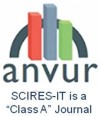Personal hand-held devices and virtual reality passive technologies for digital heritage browsing: Lesson learnt with the KIVI project 
Abstract
A common issue for 3D real-time displaying concerns the amount of computing resources needed to perform smooth photorealistic sequences. Fast frame-rates and user-responsive interactions are hugely costly in terms of datasets workflows and digital effects processing: real-time cast-shadows, advanced lights effects, depth of view blurring and ambient-occlusion rendering are putting in severe strain the most recent rendering solutions. Certainly, the real-time rendering of architectural and digital heritage artifacts do not need advanced FX sets, commonly involved in multi-user role-games, but instead require very detailed 3D models to permit accurate surveying protocols and detailed scientific observations. The recent (re)discovery of light immersive VR solutions brought to the front outdated problematics, revealed more than 20 years ago with the rise of former Virtual Reality experiments: early Nintendo Virtual Boy (1995) and the NASA's Incredible Helmet (mid 90's) explored personal immersive capabilities but without meeting at that time it's potential market. Today, with the rise of low-cost smartphones mounts, we face similar issues : despite poor computing capabilities, reduced wireless bandwidths and low-polygons 3D models, the KIVI project explores technical and ergonomic opportunities that could today – with the use of personal hand-held technologies - ensure a rewarding experience in the virtual discovery of architectural and heritage artifacts.
Keywords
Full Text:
PDFDOI: http://dx.doi.org/10.2423/i22394303v6n1p67
References
Article Metrics
Metrics powered by PLOS ALM
Refbacks
- There are currently no refbacks.
Copyright (c) 2016 Violette Abergel, Renato Saleri, Laurent Bergerot, Livio De Luca

This work is licensed under a Creative Commons Attribution-NonCommercial-NoDerivatives 4.0 International License.
SCIRES-IT, e-ISSN 2239-4303
Journal founded by Virginia Valzano




